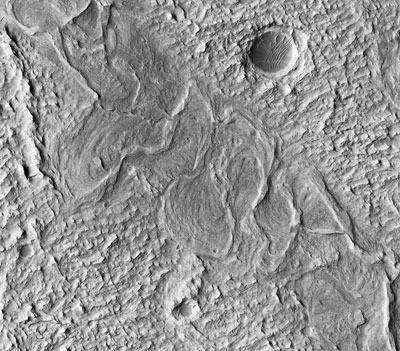Sedimentary record of ancient climates on Mars
By:
Edwin Kite
CalTech Institute
| When: | Friday, October 5, 2012, 10:30 a.m. to 11:30 a.m. Join us for coffee beginning at 10:00 a.m. |
| Where: | Seminar Conference Room, 10100 Burnet Road, Bldg 196-ROC, Austin, Texas 78758 |
| Host: | Jack Holt, UTIG |
Click for a Live Broadcast.

Abstract
No rivers flow on today's Mars, but rovers and orbiters have found
>3 Ga-old sedimentary rocks, dry rivers and paleolakes, and aqueous
minerals. Do these indicate a past period of long-term climate stability?
This talk is about extracting environmental information from the sedimentary stratigraphy and geomorphology of early Mars. We seek global constraints on the nature of the early wet era, and local environmental information to guide the hunt for Martian organic matter and hydrocarbons.
First I will discuss results from Gale-Aeolis-Zephyria, an ancient fluvial-aeolian depocenter that includes Gale Crater. Basin analysis and sequence stratigraphy are applicable to Mars, with some modifications for use on a tectonically quiescent desert planet. Earth's continents are shaped by competition between tectonics and runoff, but Gale-Aeolis-Zephyria records a competition between aeolian processes and runoff. At Aeolis-Zephyria, a 300m-thick fluvial-aeolian succession records >= 1 Myr of runoff. 1m-resolution HiRISE DTMs confirm continuous outcrop of point bars and channel deposits in plan-view outcrop over 100 km distances (1000 km in one case). Within the sequence, paleohydrology constrains runoff production, and regionally extensive facies transitions allow climate changes to be inferred. Small impact craters embedded within river deposits place an upper limit on ancient atmospheric pressure and constrain paleo-sedimentation rate. The "Curiosity" rover is currently exploring the moat encircling a 5km-high sediment mound in Gale Crater. This moat-and-mound pattern is common in Mars craters and canyons, but its origin is unknown. I will set out the evidence that moats and mounds grew together, shaped by slope winds down the crater and mound flanks.
Moving from regional data to global modeling, I will use a snowmelt model to understand the global environmental context of sedimentary rock formation on Mars. Climate models struggle to maintain annual mean temperatures >273K on early Mars, making snowmelt an attractive candidate water source for cementation. Some (rare) fluvial landforms are surprisingly recent. Results from a mesoscale model suggest that these deposits record transient, localized conditions, rather than a global return to wet conditions. Taken together, data and models hint at an early Martian climate comparable to the Antarctic Dry Valleys.
"Curiosity" will soon be in a position to test this hypothesis.




